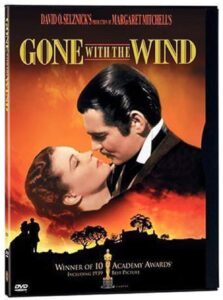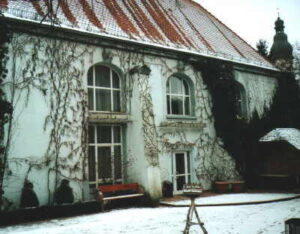1955 Speyer, Germany
Ursula Kötting
1939
Speyer, Germany
Interviewed on February 7, 2022
by Johannes Kretzler

(Translated from German)
I won’t be able to remember the first movie I watched, or any movie-going experience in its entirety for that matter. Maybe Sissi was the first one I watched? I think that one came out when I was around 15. Or maybe my first one was a film with Romy Schneider. She might’ve been younger than me, actually. Or maybe it was Das Fliegende Klassenzimmer [The Flying Classroom] or Das Doppelte Lottchen [Two Times Lotte]. Man, I really can’t remember. I wasn’t really a big movie-goer. You have to remember that we had a very strict youth, so enjoying ourselves wasn’t really a priority back then. I often went to matinees about nature or distant travel locations. I was fascinated by Vom Winde Verweht [Gone With the Wind] when I was a little older; I remember watching that one many times. Oh! And Tati films were fantastic too, but those were later I think. I was a big fan of anything with Gerard Felipe and I absolutely adored James Dean. Jennseits Von Eden [East of Eden] with James Dean was probably my favorite movie. I don’t really remember what it was about, but I think the basic premise was that there were two brothers living in rural America. One of them was very adventurous while the other was a little more timid. I think the movie was about a pretty girl that the shy brother stole from the adventurous one? Or maybe it was the other way around. I don’t remember. I also watched Gone with the Wind at least three or four times. They would run it every few months in the theater and I’d always go back and watch it again.

Our movie theaters were lovely, even in my little town. The tickets weren’t very expensive back then either. They had student tickets that were particularly affordable. The seats were really cushioned and had a lot of legroom. I remember them being really comfortable. I also remember the curtains being really plush. There was a lovely theater in Speyer called the Alhambra. At least I think it was called that. I can’t quite remember how big it was, probably mid-sized for the era. We definitely didn’t have enormous movie theaters like they have today — at least not in our little town.

Regarding concessions, I don’t think the theaters had anything to eat back then. They didn’t even have popcorn. Actually… wait! Before every movie they would show the weekly news, maybe a few nature clips or advertisements for upcoming films, and once those had all finished there would be a short break when the lights would turn on and ladies wearing aprons and carrying little trays with ice cream would file into the theater. They then walked through all of the rows selling the ice cream. I never bought it, though. We grew up too modestly for that. You know, those were still times where we couldn’t afford most things; my mom raised us pretty strictly. My dad was a food chemist before he died in the war, so he was also pretty specific about what we were allowed to eat. Anyways, other than the ice cream ladies the movie theaters also employed ushers that would welcome guests at the door. All of the seats in the theater were numbered, so when you arrived they would greet you and show you your seat.
After the ladies selling ice cream had finished, the lovely music would would start, the curtain would open, and the movie would begin. The scenes in the movies were filmed much slower back then; nowadays the movies feel so much more hectic. If you sat in the front of the theater you’d get neck cramps so people usually sat in the back. Way in the back was where all the couples were seated because they didn’t want people to notice them as they… you know… focused on other things. I didn’t really care about them, though. I sat in the back anyway because I wanted to see well!
I usually went to the movies by myself, maybe with a friend. I just remember the matinees being fantastic. We’d go around 11am. They weren’t Hollywood movies or anything, just films about nature. They showed beautiful landscapes, cute animals, and places all around the world. Another thing that I remember vividly was the outrage that Die Sünderin [“The Sinner”] with Hildegard Knef caused when it was released. She had a naked appearance in the film and the people in my small town thought it was unbelievable that something like that could be shown to the masses. Nowadays you can’t even imagine that kind of outrage anymore. Anyway, watching Die Sünderin was unheard of for us Catholics, so we never went to it. Our Protestant friend went, though, and our entire friend group was dismayed; our parents all thought, “how could she watch something like that!” I couldn’t even have gotten into the movie if I wanted to; back then, you’d have to be 18 to watch what 12-year-olds are allowed to watch today. The restrictions back then were much, much stricter. That’s why we didn’t go to the movies as young kids. I guess it was also because of the war; keep in mind that I was born a week before the war started. During the war they still had movies, but they were mostly for the soldiers to keep their spirits up.
I always walked to the theater. Remember that we had nothing at the time — only our own feet, maybe a bike if we were lucky. The walk only took 20 minutes since the theater was in the middle of the town, making it pretty accessible for us. We didn’t have buses or anything yet. In the war we had to give a lot of our belongings to the army: bikes, skis, radios and so on. I know they needed the skis in Russia in the winter. We kept a pair of winter boots that my sister had to wear everyday in the summer since we couldn’t afford a separate pair of shoes for her. My brother just walked barefoot, even though the streets were always boiling hot. But going to the movies was always worth it. Again, I didn’t go very often, but I enjoyed it when I did.
